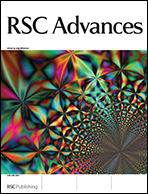The role of TiO2 morphological characteristics in the ultimate performance of advanced, light-triggered EVOH–TiO2 nanocomposite films is analyzed using four different inorganic anatase-TiO2 materials obtained from the same initial solid precursor. Morphological variations in the inorganic component lead to differences in the inorganic–organic interface, described here through a detailed structural investigation using wide angle X-ray diffraction (WAXS), Raman and attenuated total reflection Fourier transform infrared (ATR-FTIR) spectroscopies together with microscopy tools. Two significant properties of these composite films induced by light absorption were studied: a) the self-degradation of the films under sunlight and b) their self-cleaning or disinfection properties against Gram-negative (Escherichia coli) and Gram-positive (Staphylococcus aureus) bacteria upon UV excitation. The analysis of results provides evidence that, within the series of samples studied, the optimization of these two light-induced properties is related to specific morphological aspects of the oxide component. The different charge carrier species involved in the two processes allow rationalizing the self-degradation as a main function of primary particle size of the oxide component while the self-cleaning properties seem to be related to a more complex root on oxide morphological features, likely associated with particle–particle networking details.

You have access to this article
 Please wait while we load your content...
Something went wrong. Try again?
Please wait while we load your content...
Something went wrong. Try again?


 Please wait while we load your content...
Please wait while we load your content...